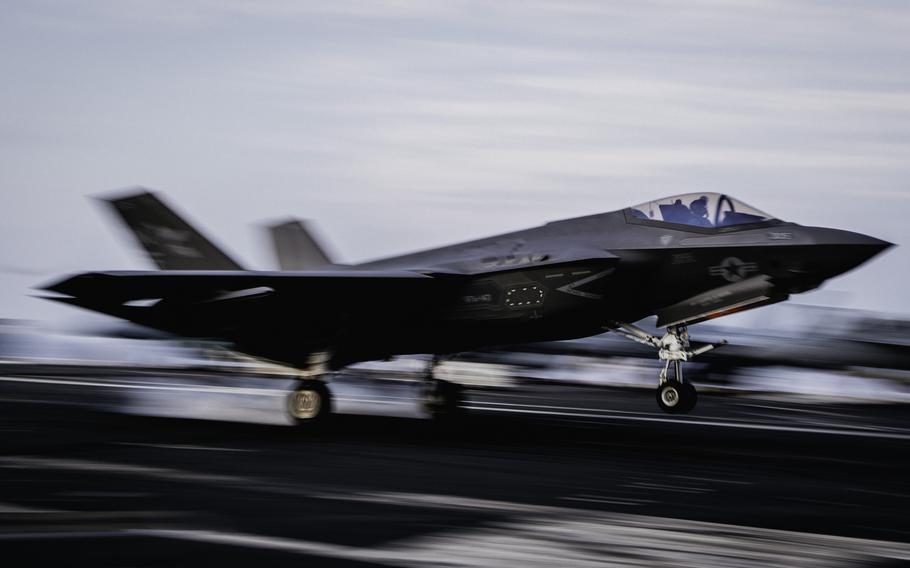
An F-35C Lightning II lands on the Nimitz-class aircraft carrier USS George Washington while underway in the Philippine Sea, June 20, 2025. (August Clawson/U.S. Navy)
The U.S. has long been recognized for its technological edge in developing battlefield weaponry. The design work for such platforms occurs years before a system ever sees the light of day and, even after it does, still may remain a work in progress to improve it.
This has been the case with the F-35 — a class of single-seat, single-engine, supersonic, stealth, multirole combat fighters designed for both air superiority and strike missions. It boasts numerous capabilities including electronic warfare, intelligence, surveillance and reconnaissance. And, when it comes to takeoff and landing capabilities, there are three variants of the aircraft: conventional, short/vertical and carrier catapult assisted launch/assisted recovery.
While the F-35 first saw the light of day in 2006, the version of the aircraft taking to the skies today is what commercial marketeers would promote as a “new and much improved” product.
The F-35’s advanced technology is so superior, it has been acquired by 18 of our allies. While the list includes our NATO allies, one country conspicuously absent is Turkey, due to its decision to obtain the Russian S-400 missile defense system. Five days after receiving its first installment of the system in July 2019, Turkey was suspended from the F-35 program. The U.S. made it clear the “F-35 cannot coexist with a Russian intelligence collection platform that will be used to learn about its advanced capabilities.”
The first foreign nation to receive the F-35 was Israel with the first two delivered in December 2016. As of 2025, Israel has purchased a total of 42 F-35s with plans to build up to an inventory of 75 by 2028. In 2018, it became the first country to use the F-35 in combat.
It should come as no surprise Israel was the F-35’s first foreign purchaser. Such sales were not simply a “one-way-street” transaction but began a communication exchange by which aircraft performance was improved. In selling the F-35 to the Israelis, the U.S. knew they would identify technological improvements to further hone the aircraft’s cutting-edge capabilities.
As was noted after the F-35’s 2018 first combat use, Israel introduced recommended changes “overcoming critical technical and mechanical problems” and provided daily feedback to the U.S. manufacturers that “dramatically enhanced the F-35’s reliability, maintainability and capabilities.” Such recommendations have saved U.S. manufacturers billions of dollars in research in furthering its development.
Israel’s F-35s saw combat in Iran on two occasions — Oct. 26, 2024 and June 13, 2025. In these conflicts, it was deployed, along with other U.S.-made aircraft (F-15s and F-16s), in waves of 100 and 200 planes, respectively. The 2024 attacks were in retaliation for Iran’s earlier attacks against Israel; the 2025 attacks were to disrupt the mullahs’ nuclear weapons program. In the latter, Israelis innovatively extended the F-35’s range by adding drop tanks without compromising the aircraft’s stealth capability.
Innovation has never been in short supply in Israel — an asset upon which we have capitalized in developing the F-35 to be the best it can be!
James Zumwalt is a retired Marine infantry officer (lieutenant colonel) who served in the Vietnam War, Panama and Operation Desert Storm. He is the author of three books and hundreds of opinion pieces in online and print publications.